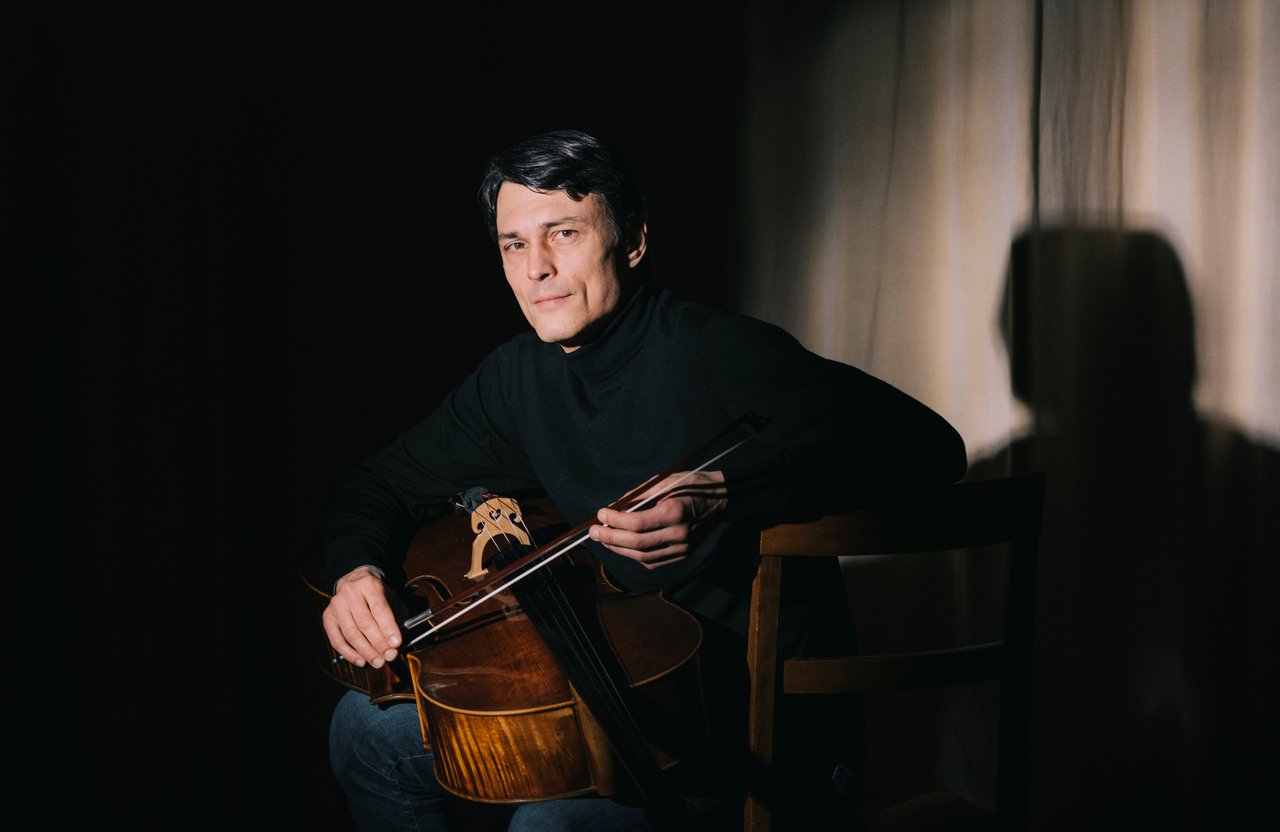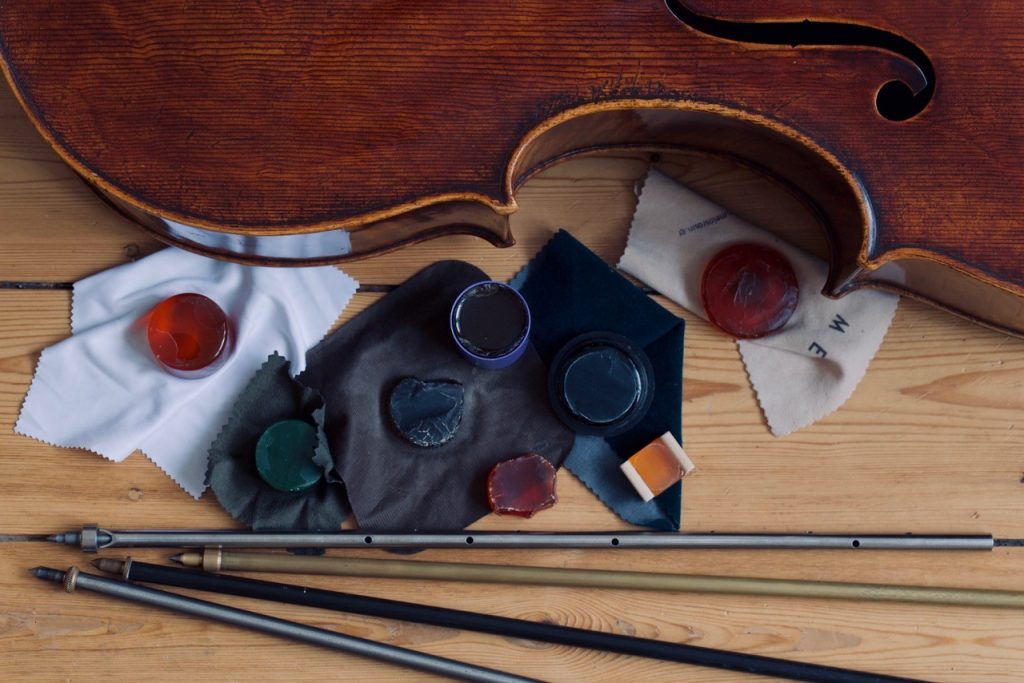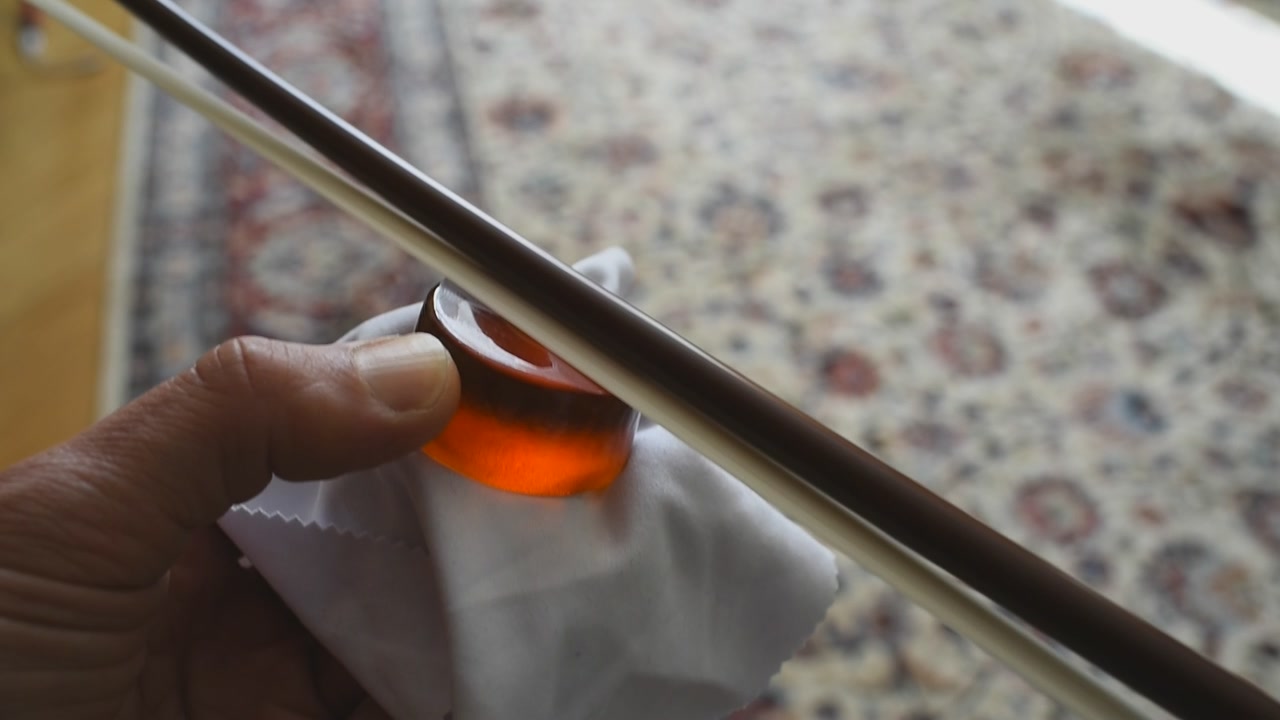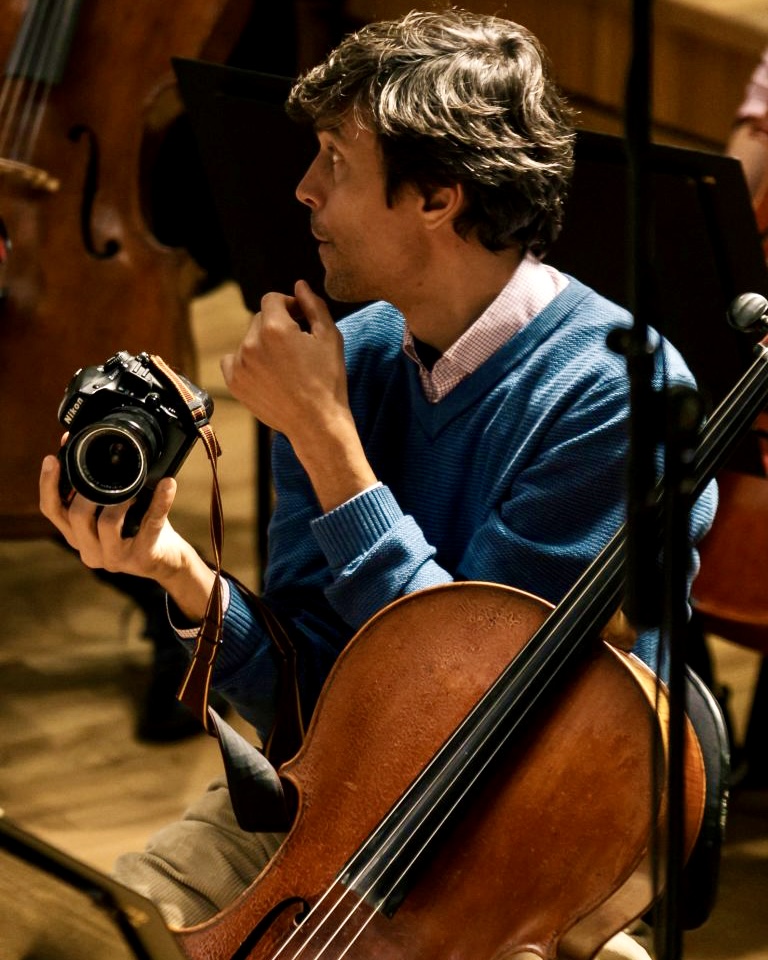16.00 Uhr
Neujahrskonzert

What’s in your instrument case, we asked the musicians of the Konzerthausorchester. We suspected that half a household is often hidden in a cello case. Our cellist Andreas Timm has a rather puristic bent. No photo exhibition under the lid, no lucky charms between the strings – instead a very special collector’s passion on his search for the ideal sound.

Still life with rosin – what the uninitiated may think of as paints, honey or bars of soap are actually different types of “bow rosin". In the foreground: four cello end pins.

Some people collect comics or snow globes; Andreas has a rosin collection in his white cello case. “I would definitely call it a quirk,” he laughs. But it’s not about collecting per se for him. “The rosin is what gives bow hairs the ability to vibrate the strings in the first place and thereby produce a sound.” Each of his pieces of rosin has a different composition and therefore has a different effect. “Over the years, I’ve tried out a range of manufacturers of this little ‘miracle product’.” The cellist has even melted together his own rosin from scraps of various brands in empty aluminium tea lights, using it to elicit desired sound characteristics.


Many strings with different characteristics are always in Andreas’ instrument case as well. Another nice reason to play the cello – the beautiful wrappers ; )
By the way, Andreas owns several end pins: “The end pin supports the instrument securely. But it also influences playability and sound. Models can be made of different and sometimes exotic materials. These range from simple steel to titanium alloys and combinations of different, sometimes quite expensive metals such as tungsten or carbon.” This variety has its purpose: “They can give the instrument’s sound brighter and more radiant characteristics, for example, or alter it in a more voluminous direction.”

On the go in search of the ideal cello sound
Andreas feels that there is no patent recipe for an ideal combination of instrument, strings, end pin and rosin: “In my professional life, I have come to know and appreciate the possibilities of influencing sound through various aids. One always tries to preserve the basic character of the instrument, but can also use these aids to elicit more beautiful and richer facets from it. Last but not least, one’s own sensations while playing are very important, i.e. the subjective impression. For me, the search for the ideal sound remains an exciting process. I enjoy the rare moments when I feel I am very close to this imaginary goal.”

Andreas Timm has been Associate Principal Cellist in the Konzerthausorchester Berlin since 2002 and also plays in the Horenstein Ensemble. Like here in Tallinn during the Baltic tour, he always enjoys having his camera with him.
Photos: Andreas Timm, Tobias Kruse/OSTKREUZ (cover portrait), Gunnar Laak (portrait in the orchestra)